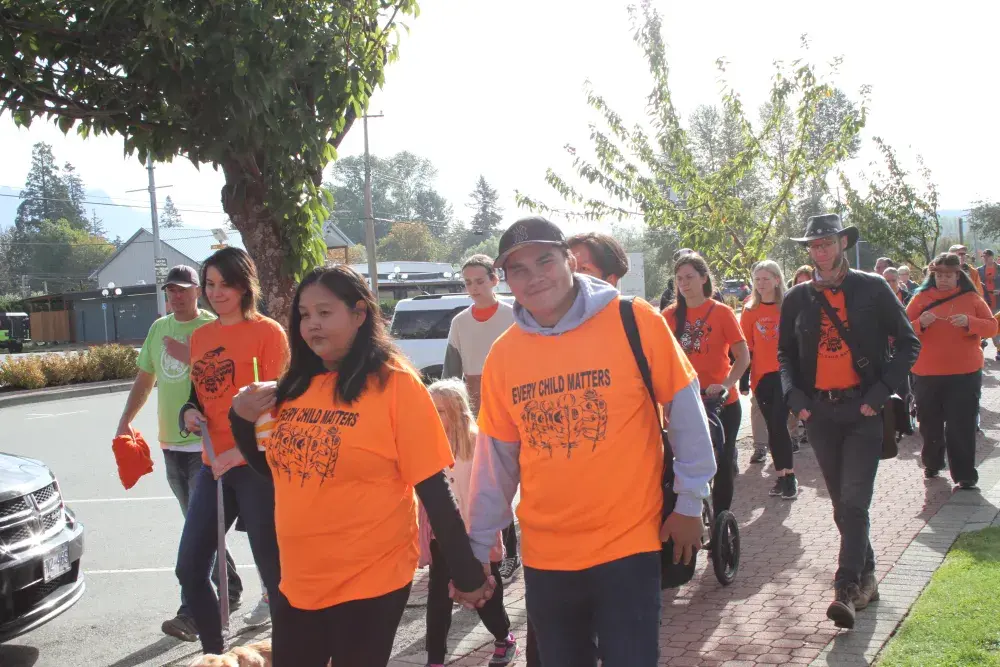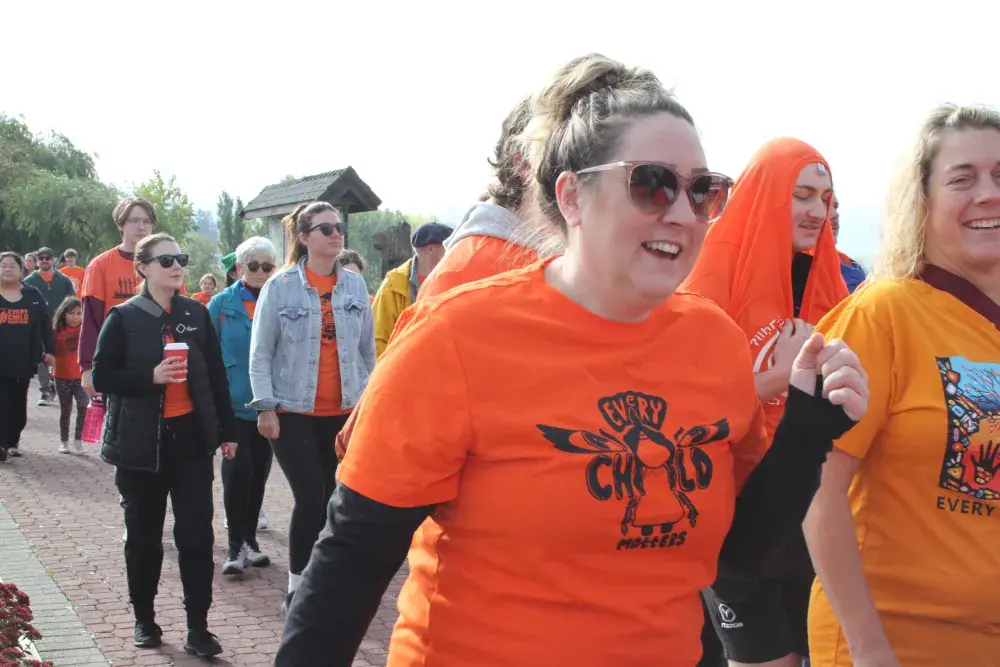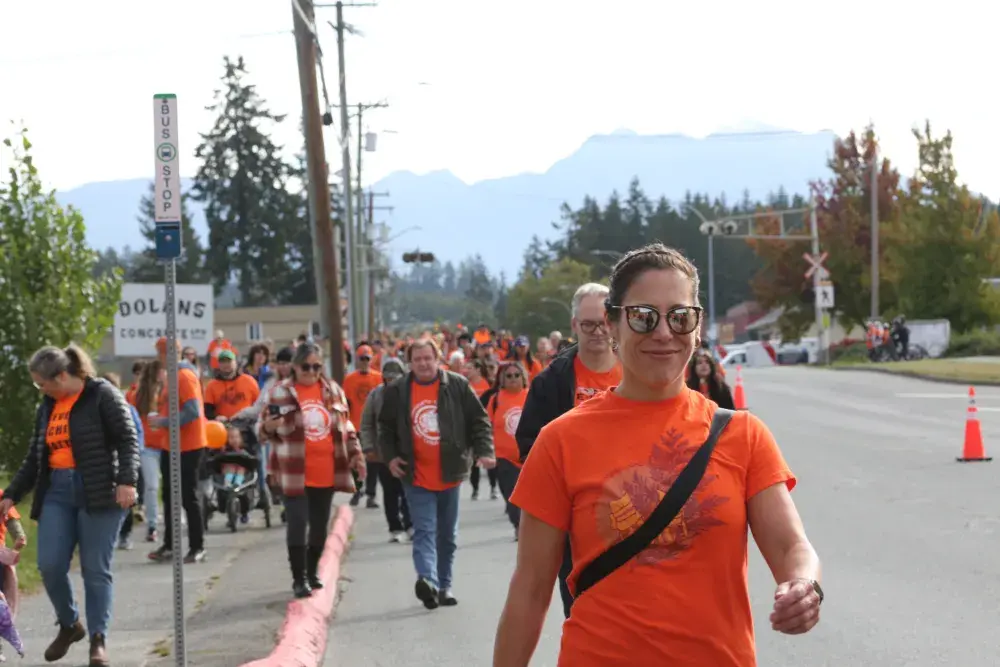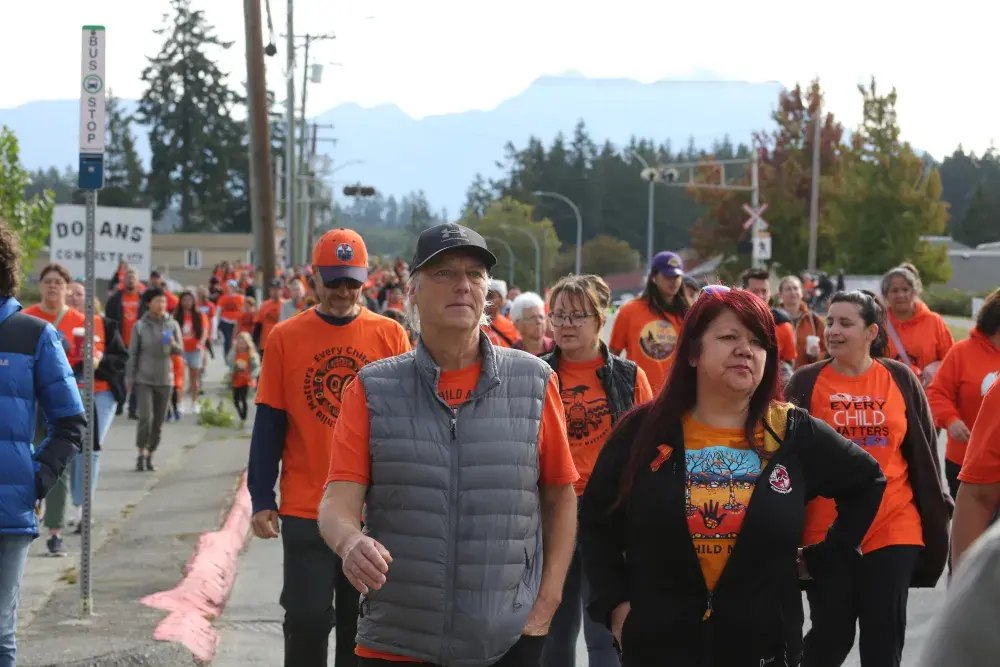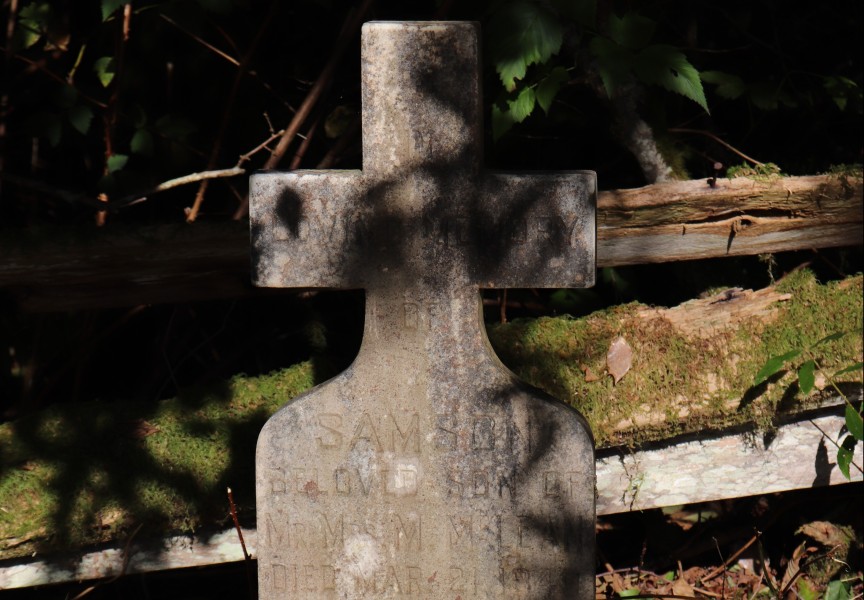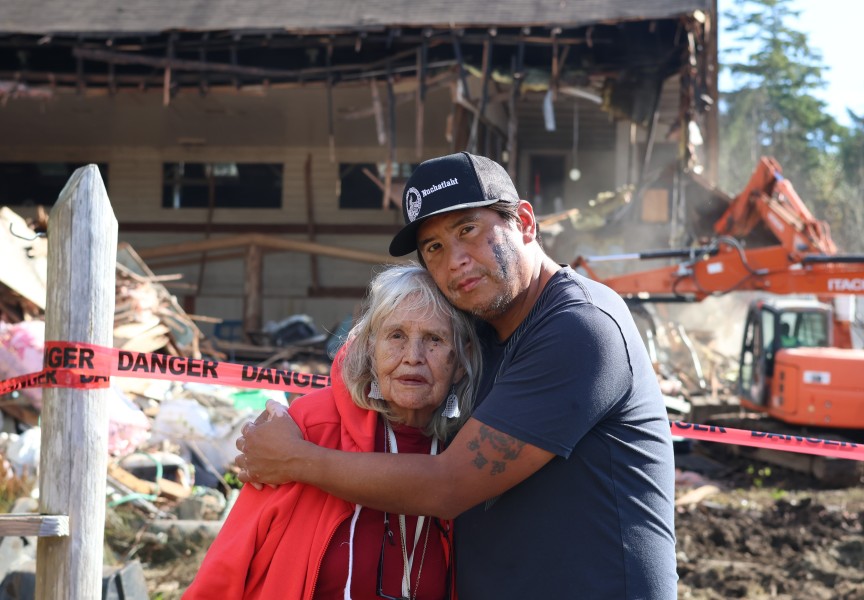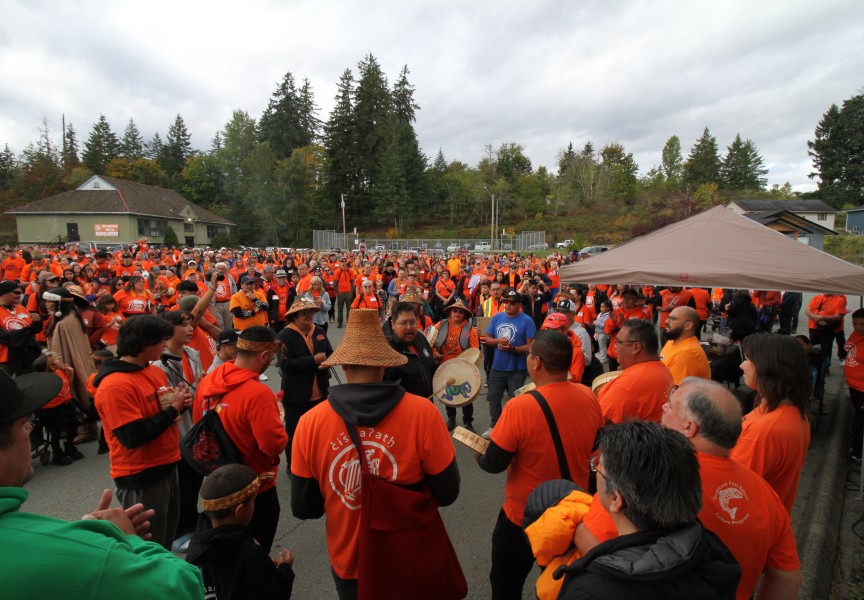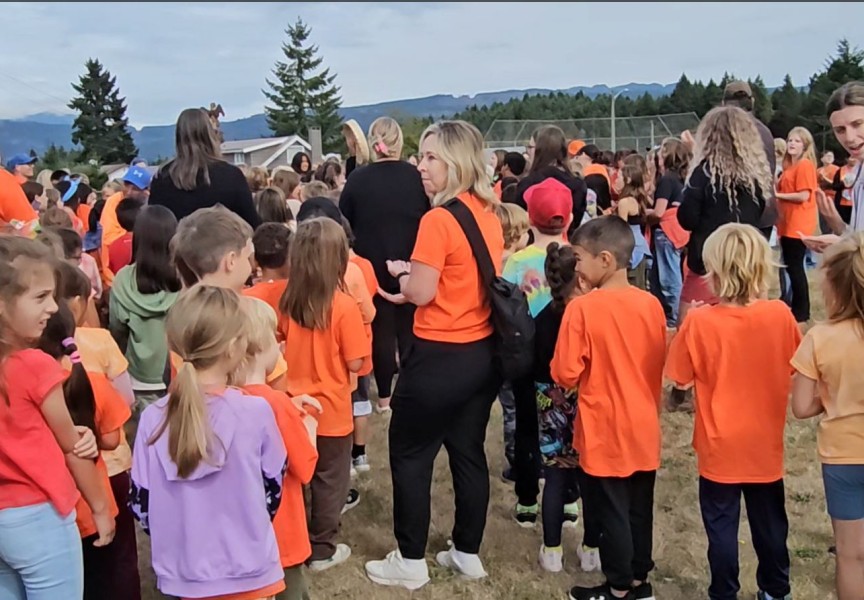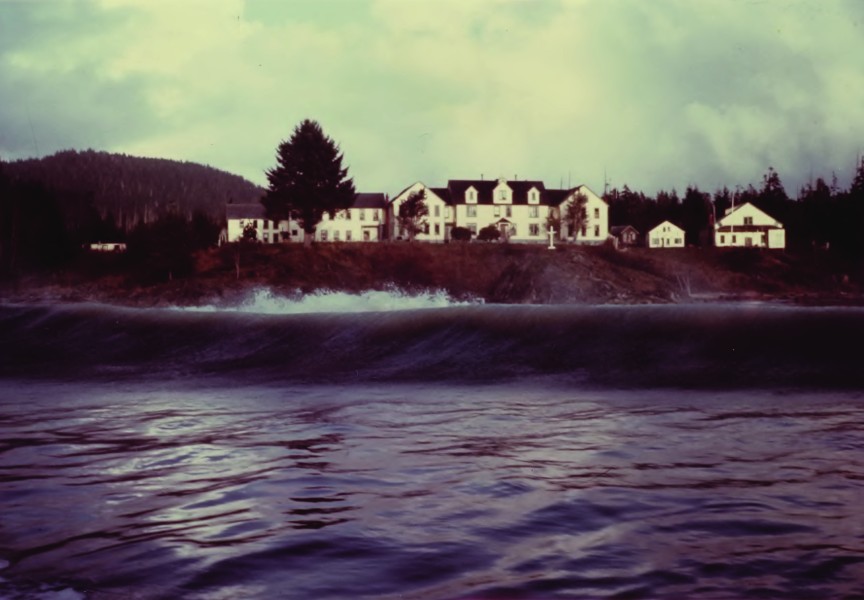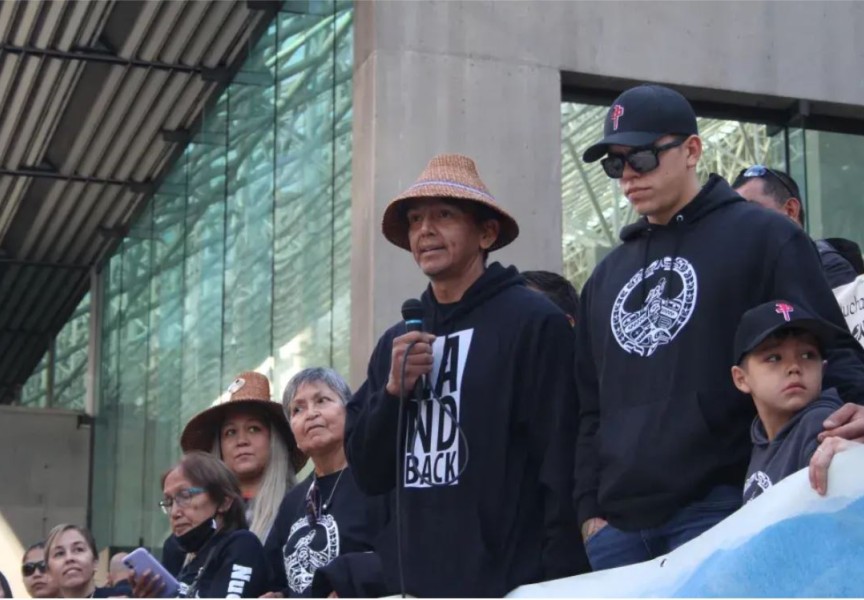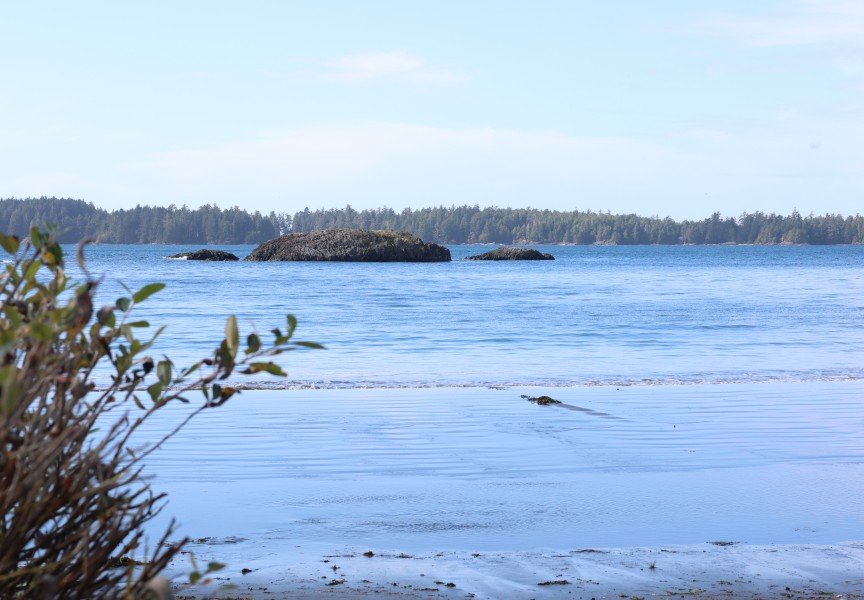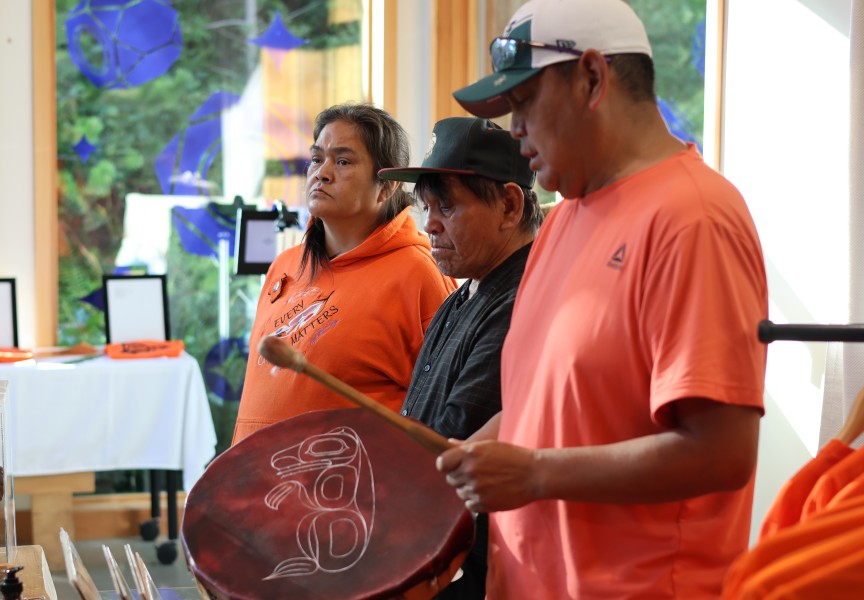On Sept. 30, National Day for Truth and Reconciliation, the streets are flooded with a sea of orange. Across Canada, people of all ages, cultures, and backgrounds wear orange shirts which feature the phrase “Every Child Matters”. The orange shirts are more than clothing; they are a symbol of remembrance, resilience, and a commitment to reconciliation.
In August, the Orange Shirt Society registered a trademark for the phrase “Every Child Matters”. The trademark has granted the Orange Shirt Society exclusive rights to use the phrase on merchandise, meaning any vendor wishing to sell items featuring the phrase must first obtain written permission.
A broad and complex perspective is shared by Chief Willie Sellars of Williams Lake First Nation, whose community has been at the forefront of the Orange Shirt Day movement.
“The history and legacy of the Orange Shirt Day is Phyllis Webstad’s story,” he said. “The phrase ‘Every Child Matters’ started with Phyllis Webstad and we have to recognize that. We also have to hold up what the day represents and how it’s grown into something so much bigger than all of us.”
The Orange Shirt Society is Phyllis Webstad’s non-profit organization, created to raise awareness of the residential school experience and support reconciliation. On Aug. 29, 2024 the Orange Shirt Society posted a trademark notice to Facebook, just one month before Truth and Reconciliation Day. Vendors selling merchandise featuring the phrase “Every Child Matters” are expected to cease unless they obtain written permission.
The Creation of Orange Shirt Society
At six years old Phyllis Webstad lived in poverty with her grandmother on the Dog Creek Reserve. Her grandmother managed to purchase Webstad a new shirt just in time for her to wear it at the Saint Joseph Mission residential school.
On her first day at residential school, she was stripped, and her orange shirt was confiscated. Her excitement quickly turned to the hardship of living at the residential school, which Webstad spoke of while accepting a B.C. Reconciliation Award on Jan. 23.
“We had to cry ourselves to sleep,” she recalled at the recent event in Victoria.
In May 2013, survivors of the Saint Joseph Mission residential school organized a reunion event and commemoration project, initiated by the Esketemc First Nation Chief Fred Robbins. The event was held in Williams Lake with Webstad as the spokesperson. She shared her story, creating the legacy of Orange Shirt Day. The Orange Shirt Society was established in 2015 by Webstad and other founders of Orange Shirt Day.
Trademark Controversy
Walmart, Aritzia, London Drugs, and other large corporations are the only authorized licensees to use the trademark in association with merchandise. While the trademark might seem like a necessary step to protect the integrity of the phrase, it has sparked debates within Indigenous communities.
Ida Thompson from Haisla First Nation is a scholar and activist.
“I believe Indigenous artists should be the only authorized entities, and it's interesting that Walmart, Aritzia, and London Drugs are now profiting off the trauma caused by the Canadian government,” she said. “I think what would be helpful would be engaging in open dialog with Indigenous artists, communities and survivors...”
She also suggests that the trademark permits Canadians to only think about the horrific residential school legacy once a year.
“I think it's an opportunity for false allyship and false activism,” said Thompson. “I really invite people to go to the thrift store after September 30th, and just count how many orange t-shirts that have been donated because it's only used for one day.”
Andy Everson from K’omoks First Nation is a renowned artist. In 2015, he designed a logo which was popularly associated with the phrase “Every Child Matters”. The design was appropriated by international online retailers, which mass-produced Everson’s design and the slogan without any consultation or compensation.
During an interview with the Nanaimo News Bulletin in September Webstad addressed the issue of others profiting from the Orange Shirt Day movement.
“[M]y 10-year experience being held captive there was anything but fashionable,” she said in the News Bulletin article. “They just look at it as a money-maker. They don’t understand the history behind it they see it as trending and popular.”
Profits from the sale of “Every Child Matters” merchandise are solely controlled by the Orange Shirt Society and its licensees.
What Might the Trademark Inspire?
Collette Jones, PhD, from Snuneymuxw First Nation, is a first and second-generation residential school survivor and has expressed her support for the Society's trademark. All nine of Collette’s siblings attended residential school. She acknowledges the importance of protecting the integrity of the phrase. Jones’s niece, for example, created a new design that honors residential school survivors without infringing on the trademark by omitting the “Every Child Matters”. Collette’s voice trembled as she described the shirt.
“I was really touched when I saw that,” she said. “I was so touched, because we all survived.”
Her niece’s design, while recognizably an orange shirt homage, does not infringe the trademark.
“If they [The Society] began it first then rightfully so it should be theirs,” said Jones. “It’s protected. Just like any other business. People are respectful and cautious with other trademarks, they need to do the same for the Orange Shirt Society.”
Rustee Watts from Hupacasath First Nation is an activist and is working toward his master’s in educational leadership. Watts believes that while the trademark may restrict some artists, it could also spark new forms of creativity. The idea of Nuu-chah-nulth day is coming back, and Watts envisions a sea of red and black marching Port Alberni on Sept. 30. Orange sashes would be an addition to the red and black clothing, to honour Webstad as a driving force.
“Orange Shirt Day and Every Child Matters, that is Phyllis Webstad’s dream,” said Watts. “Beautiful dream! I want to see other dreams. There are so many dreams… why stop there?”
“[W]e have never been official as Indigenous vendors before, so what is not being official going to matter us again?” he continued. “You go to Indigenous tournaments, or any sort of gatherings, or places where these vendors are allowed to set up and they mutate a lot of things in fun ways to spread fun messages. And in no way do I think there is a bad heart involved…”
Intellectual Property and Ethical Considerations
The legal implications of the trademark are complicated. According to Andy Chow, the Orange Shirt Society’s intellectual property lawyer, a registered trademark is not always necessary to enforce the rights associated with a brand or slogan. Even without registration, the Orange Shirt Society still has common law rights to the phrase. This means unauthorized use of the phrase or its associated logo could result in legal action. The trademark system, designed to protect intellectual property, does not account for the cultural significance and the shared history behind the phrase.
The Orange Shirt Society’s Branding and Copyright Policy states, “Subsequent failure to rectify the improper use of the Trademark may result in a termination of any license to use the Trademark and in legal action by the Society, including but not limited to the exercise of any rights available to the Society at law.”
Many are curious if the trademark can be retroactively applied. The answer is unclear.
“I think that the logo itself is more important than the words, because the words themselves, that’s been our motto,” Watts said. “We have always been in a village mentality, and the centre of our villages are the youth, so ‘Every Child Matters’… its been our motto.”
“Indigenous artists should have the freedom to use culturally significant slogans in their work because it serves as a form of expression and reclamation of our heritage,” said Thompson. “But there's also concerns about commercial exploitation of cultural symbols without proper acknowledgement or compensation, ultimately it would be ideal to foster a system that respects both the rights of the original creators and the need for Indigenous artists to stress their culture freely. Collaborative agreements and partnerships could help bridge this gap.”


